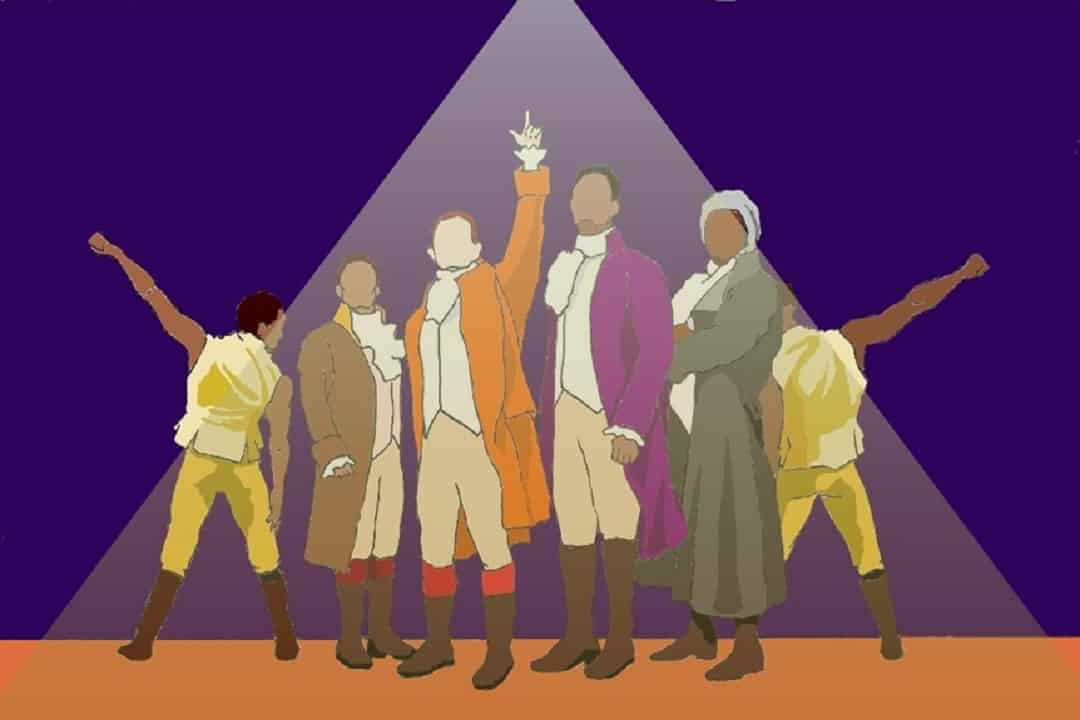A hip-hop musical about the life of America’s first treasury secretary sounds like a terrible idea.
That’s what I thought too when I first heard about Hamilton in 2016. Four years later, I’ve now seen the live production at Toronto’s Ed Mirvish Theatre, jammed to the soundtrack so many times that I can recite entire songs verbatim, read the entire 818-page historical biography that inspired it, and binged the cinematic version that was recently released on Disney+.
With all of us spending more time indoors, Disney decided to push forward the release of the movie capturing the Broadway musical live from October 2021 to July 3, 2020 — meaning you can now view the entire musical from the comfort of your home. The sad caveat is that Disney+ scrapped its weeklong free trial, presumably in anticipation of Hamilton’s mass popularity. You’ll have to pay for a month’s subscription to see Hamilton, or you could simply mooch off your friend’s account.
For any newcomers, Hamilton is the rap-heavy retelling of the life of Alexander Hamilton, an American founding father who grew up as an orphan in the Caribbean and overcame the tragedy and poverty of his early life with his nimble mind and prodigious work ethic. Hamilton went on to fight in the Revolutionary War, eventually becoming George Washington’s senior aide and the first secretary of the US Treasury — a distinction that enabled him to have unparalleled influence in the shaping of early America.
The Disney+ version does its live counterpart justice, using footage from two live Hamilton performances from 2016, with all the closeups shot during an audience-less rehearsal. The constant but smooth switches between closeups and wide-view camera angles give the recording a much more cinematic feel.
I was awed by the visual spectacle of the entire show, with the glittering choreography, the beautiful costume designs, and the effortless stage transitions. Hamilton also has precise and nimble lighting that sets the emotional tone at certain parts of the story and brings characters into the literal spotlight when need be.
Hearing the original cast’s voices match the original soundtrack I had long adored only elicited cries of fanfare, and I was further impressed at how each cast member excelled in their respective role — particularly Leslie Odom Jr. as Aaron Burr, and Renée Elise Goldsberry as Angelica Schuyler. I was also reminded of just how funny this show could be — Jonathan Groff’s portrayal of King George III deserves a special mention, but the recorded audience’s laughter at certain moments also helped.
Viewers might be tempted to turn on subtitles, which can be useful in deciphering the rapid-fire rap lyrics so distinctive to Hamilton. However, they can distract from what is happening on-screen, detracting from the entire viewing experience. Moreover, the cast members enunciate the words well enough that subtitles seem unwarranted the majority of the time. I’d generally advise viewers to keep subtitles turned off to get a better experience of the show.
Hamilton has long been praised for its diverse casting, adding colour — quite literally — to the very white founding of America. In particular, I am gratified by the fact that Asians are well-represented in the musical. Filipino Rachelle Ann Go, South Korean Stephanie Jae Park, and South Indian Shoba Narayan have all graced the lead female role of Eliza Schuyler in other off-Broadway productions. I personally witnessed half-Japanese Joseph Morales play Hamilton and South Korean Marcus Choi play Washington when I saw Hamilton in Toronto.
As a lifelong singer and musical lover, seeing fellow Asians excel in lead roles is empowering, especially when considering the predominantly white casts of many Broadway productions.
Overall, I’d say the 6.99 USD I spent on my subscription was a worthy investment.


